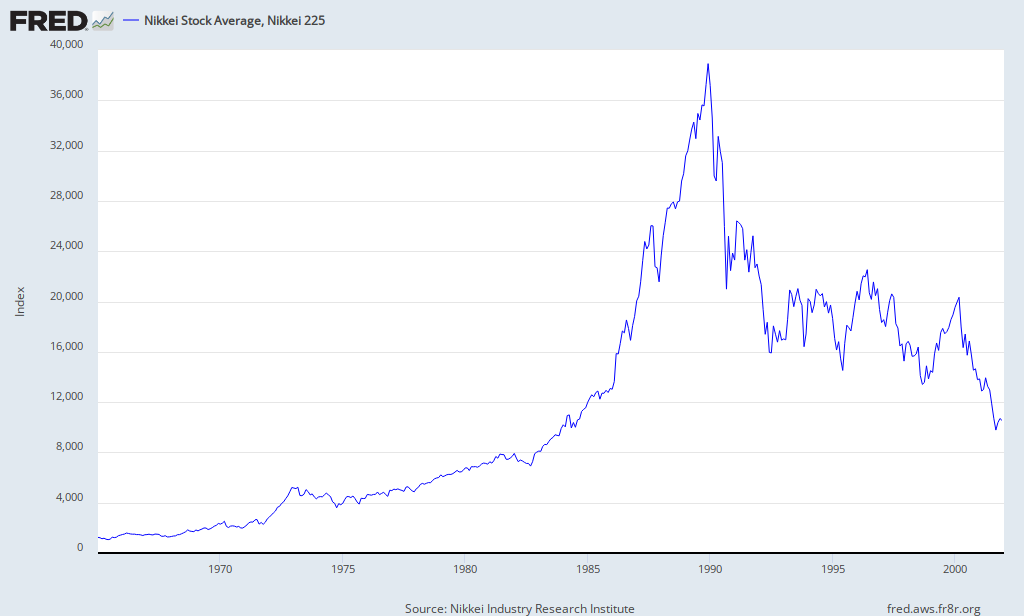
Participation is higher across the board, though the "M" for women persists. The exception is the 20-24 age bracket, where lower participation reflects women attending 4-year colleges (75% of young women attend some sort of post-high-school education, including junior colleges and technical schools).
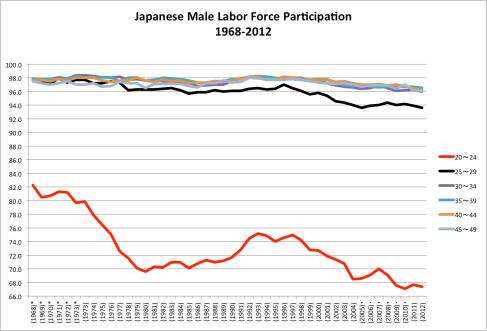
The data show the rise of post-secondary schooling for men, but also a drop in participation of 25-29 year olds since the banking crisis, by 2+ percentage points. Older brackets dropped about 1.5 pct pts.
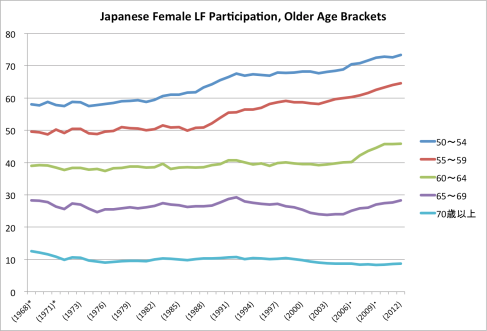 Data for women in older age brackets. Except for the age 70+ bracket, all have risen, but only over the last 6-7 years for women around retirement age.
Data for women in older age brackets. Except for the age 70+ bracket, all have risen, but only over the last 6-7 years for women around retirement age.
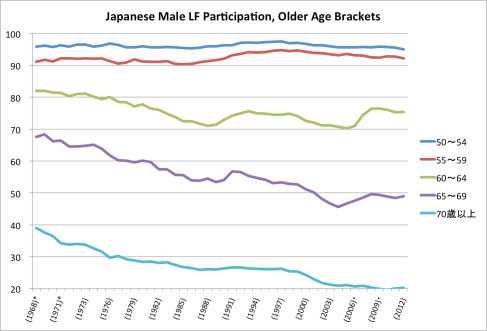 Over the last 50 years we see the advent of retirement as the norm for men age 65-69, but with some reversal the last 6-7 years, similar to the shift in participation by older women.
Over the last 50 years we see the advent of retirement as the norm for men age 65-69, but with some reversal the last 6-7 years, similar to the shift in participation by older women.
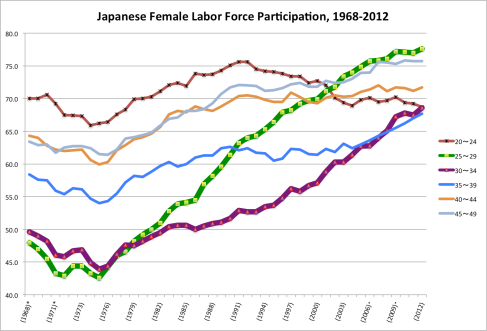
This is my favorite graph, highlighting the monotonic rise in labor force participation by younger women, first by women in the 25-29 age bracket, then (starting about 15 years ago) in parallel by women in the 30-34 age bracket. Now that seems to have spread to women in the 35-39 bracket -- another year or two's data will help clarify...
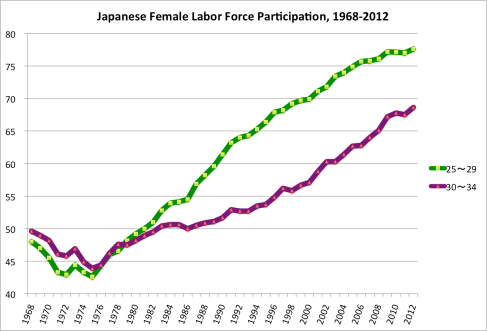 A concurrent set of posts on the NBR Japan Forum is on the role of women in the labor force. At younger ages, the shift towards greater participation is dramatic, a 30 percentage point jump among 25-29 year olds. Participation for women age 30-34 is following in parallel, with about a 13 year lag:
A concurrent set of posts on the NBR Japan Forum is on the role of women in the labor force. At younger ages, the shift towards greater participation is dramatic, a 30 percentage point jump among 25-29 year olds. Participation for women age 30-34 is following in parallel, with about a 13 year lag: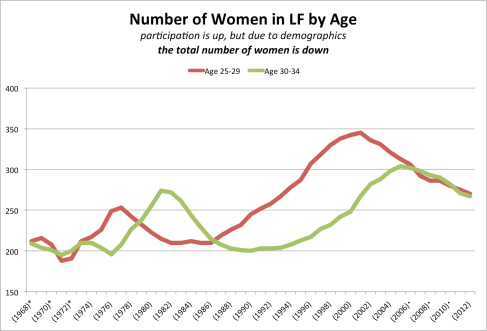 However, this is less economically meaningful than at first glance. Women are not going to be able to save Japan from its demographic challenges. Of course it is these very same women who are not having lots of children. But more to the point, these young women are now the only daughters of an already smaller generation of women.
However, this is less economically meaningful than at first glance. Women are not going to be able to save Japan from its demographic challenges. Of course it is these very same women who are not having lots of children. But more to the point, these young women are now the only daughters of an already smaller generation of women.